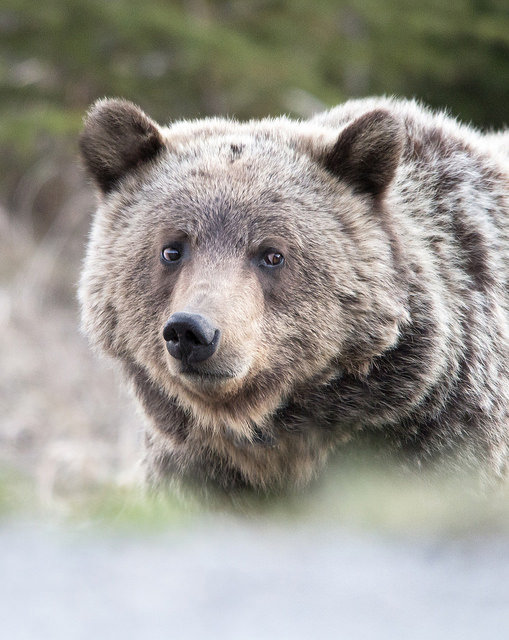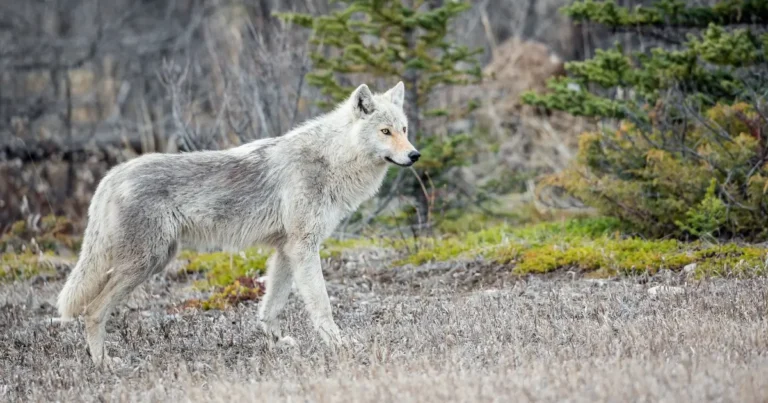
Slow down; keep your distance; watch for signs of stress; carry bear spray – all prudent pieces of advice to adhere to when out shooting. In my four years of photographing wildlife, I’ve also discovered that safe/non-impactful photography requires constant vigilance and continuous learning. Sometimes, photographers need to go beyond the logical aspects of safety and really think about how we approach our subjects.
Be conscious of ‘losing your mind’
Losing your mind, in my opinion, is the biggest obstacle to safely photographing animals. We can logically know what we should and shouldn’t do, but in the moment, overwhelming excitement merges with a desire to get a great photo – the perfect recipe for losing your mind. Or, to put in another way, losing the ability to think clearly.
I have to admit, I have succumbed to this powerful force. I’ve put myself in situations where I was potentially in danger, caused an animal unnecessary stress, or both. I suspect most wildlife photographers have made similar mistakes.
However, I’ve learned that this is a force that can be conquered with some simple strategies – being vigilant and open to learning. The more you are conscious of what it feels like to ‘lose your mind,’ the more control you have to stop it. And if you realize you made a mistake, learn from it. Always evaluate your actions after every encounter to see if you did everything possible to have as little impact as possible.
Stay in your vehicle, unless you really know what you are doing
This speaks to the more logical rule of ‘keeping your distance’, and generally applies to large mammal photography – bears, moose, elk, deer, etc. Shooting from a vehicle can be awkward, but it is doable. I know a lot of photographers are skilled in safely being in the environment with their subjects, but this takes a lot of practice. Until you get to a point where you are completely confident in the field, don’t take any chances.
A vehicle, of course, this does not guarantee safety. Never forget that driving demands your full attention. I know this sounds obvious, but it’s easy to get caught up in the excitement of finding wildlife. Please don’t just slam on your brakes and start shooting! If you see an animal from the road, look in your rearview mirror before you do anything else. If it’s safe, pull off the road, come to a complete stop and assess your position. If you can photograph from where you are, great – if not, re-position yourself if and when it is safe to do so. If it is not an option to pull over safely and cautiously, just move on.
However, don’t use your vehicle as an excuse to forget about your subject. Keeping your distance still applies to a shooting from a vehicle. Getting too close or making too much noise, at a minimum, may cause and the animal stress. On the extreme side, large animals can charge vehicles and potentially injure the occupants.
Also be aware of the type of road you are on and the law in your area. In Alberta for example, it is technically illegal to pull over (without a good reason) on a numbered highway. This may not always be enforced, but it’s on the books and we must do our best to adhere to the rules.
Kindly educate others
When it comes to seeing people putting themselves in potentially dangerous situations with wildlife, it is so easy to assume they are just plain stupid. Stupidity is only one of many reasons why people behave inappropriately around wildlife. In fact, I like to think it is the least common reason of all. More likely, it’s a matter of simply not knowing and/or getting caught up in the excitement.
Wildlife photographers/outdoor enthusiasts often take for granted that every one should know certain types of wildlife have the potential to be dangerous. Bears, of course, get the most attention. If you didn’t know a bear can be dangerous before visiting a Canadian park in the mountains, you should after your first visit to any public restroom. There are signs everywhere! But what if you don’t speak or read English? And what about other types of wildlife, like moose or elk? I’ve never seen a sign about anything other than a bear in a restroom (in Alberta anyway).
It is up to people who have the knowledge to educate others. If you see someone walking towards a moose or a bear with an iPhone, stop the person and explain why it is not safe to get that close. If they are already too close, you may need to be abrupt or yell to get them out of danger ASAP. Once they are safe, why not approach and gently explain why you were worried? Try to remember that most people who do stupid things around wildlife are NOT stupid people. Educating as many people as possible in a kind and gentle way is a great service to both humans and animals.
Kerri Martin is a popular wildlife photographer in Alberta. She is an avid contributor to The Fur-Bearers and her work can be viewed and purchased as prints at www.KerriMartinPhotography.com.
